Did you know that Fiat was planning a version pickup of the Tempra? Yes, that's right! This model never came to market, but it could have been a great rival for pickup trucks that marked the 90s, such as the Peugeot Pickup, The Chevrolet S10 and the Ford Ranger. Imagine the impact this model could have had on the Brazilian market if it had gone ahead. Throughout this article, we will explore the history of Fiat Tempra Pickup, what happened to this project and why it never hit the streets, as well as comparing it to the successful pickup trucks of the time.
The Fiat Tempra Pickup Concept
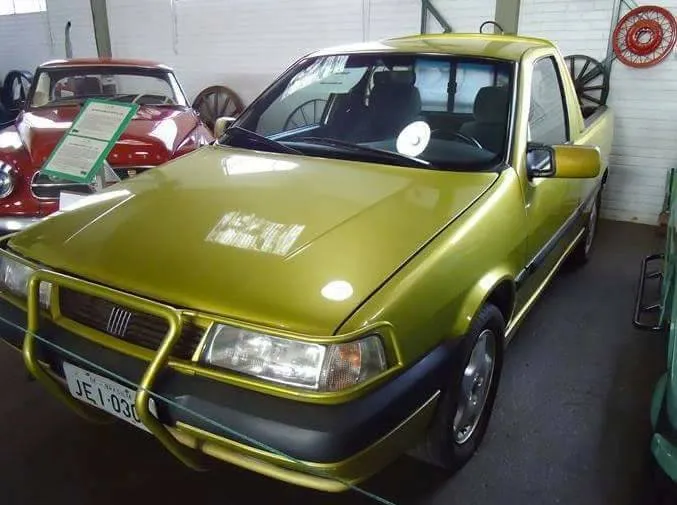
Fiat, always looking to expand and conquer new markets, had the idea of creating a pickup version of the Fiat Tempra. The Tempra was a very successful sedan model in the 90s, which captivated the Brazilian public with its elegant design, comfort and reasonable performance for the time. Based on this success, Fiat imagined that a version pickup could be a good strategy to attract new consumers, taking advantage of the model's popularity and the market trend for mid-size pickups.
The Fiat Tempra Pickup had a similar proposal to other pickups of the time. The Peugeot Pickup, for example, was also derived from a sedan, the Peugeot 405, and was very successful on Brazilian streets in the 90s. Chevrolet S10 and the Ford Ranger, in turn, became true icons in the pickup truck segment, offering robust and versatile options for those who needed a vehicle for work, but also wanted something comfortable and sophisticated.
The idea of creating a pickup version of the Tempra was not something new at Fiat. The automaker already had a tradition of diversifying its models and adapting cars to different needs. This strategy of versatility was evident with other cars of the brand, such as the Fiat Uno and Fiat Palio, which gained versions for different audiences over time.
The Research and Development Phase
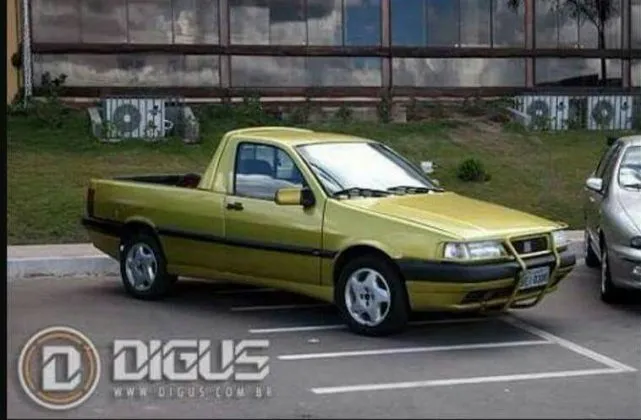
The project of the Fiat Tempra Pickup was taken quite seriously by the automaker. In the early 1990s, Fiat conducted market research with Brazilian consumers to understand the reception of this new model. The response was positive, and the idea of a sedan converted into pickup truck seemed to be a viable option. After all, pickup trucks were (and continue to be) very popular in Brazil, especially in regions further away from large urban centers, where the need for robust transportation was even greater.
O Fiat Tempra Pickup would have as its main attraction the fact that it was a more affordable model compared to other pickups of the time. As the Tempra It was already a sedan that offered good performance and comfort, the pickup version could bring the qualities of a family car, with the advantage of having a rear bucket for transporting cargo.
Rejection and the End of the Project
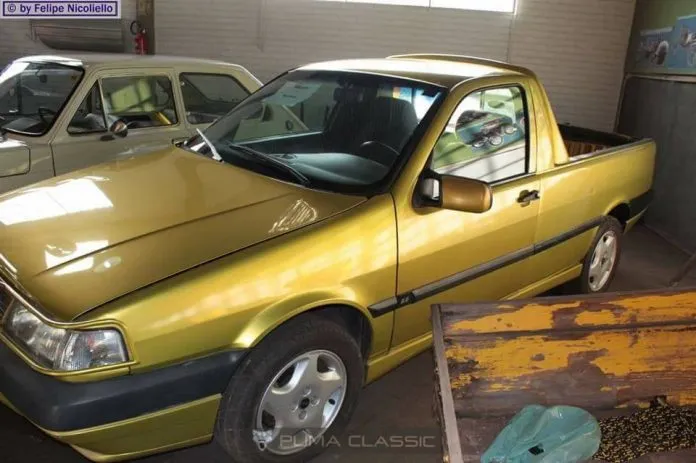
Although research indicates good market potential, the Fiat Tempra Pickup never reached mass production. The main reason for the end of the project was a combination of factors: the pickup truck market at the time was saturated with Chevrolet S10 and the Ford Ranger, which dominated the segment and already had strong customer loyalty. In addition, Fiat was focusing its efforts on other development fronts, mainly on the launch of new models such as the Fiat Palio and Fiat Uno, which were more accessible and could generate a faster financial return.
Other factors also influenced the archiving of the project, such as the need for technical adjustments to adapt the structure of the Tempra to support the load and off-road use, essential features for a pickup. The automaker also didn't want to compromise the image of a high-end sedan with a model aimed at heavy work.
Finally, the Fiat Tempra Pickup was put aside and never came to market. The model was used for some time in the factory facilities in Betim, but after that, it was donated to the Automobile Museum in Brasília, where it remains to this day, preserved as an example of a project that never saw the light of day.
Comparison with Successful Pickups
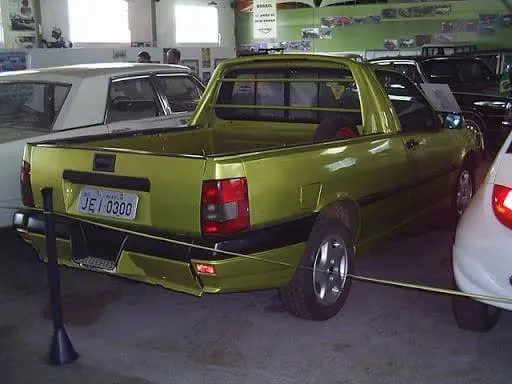
Although the Fiat Tempra Pickup never reached the market, it is interesting to reflect on how it would have positioned itself if it had been launched. Let's briefly compare what the Tempra Pickup could offer and the pickup trucks that were at their peak at the same time.
Peugeot Pickup
A Peugeot Pickup was one of the pioneers in Brazil in the segment of small and medium-sized pickup trucks derived from sedans. Launched in 1995, Peugeot Pickup was based on Peugeot 405 and was well received by consumers due to its versatility and practicality. It was a popular option for those who needed a compact pickup truck, but without giving up the comfort and design of a sedan. The Fiat Tempra Pickup could have been a strong competitor for this model, offering more space in the bucket and a more robust proposal.
Chevrolet S10
A Chevrolet S10 is one of the most traditional pickup trucks in Brazil and was launched in the early 90s, exactly at the time when the Fiat Tempra Pickup was being designed. The S10 stood out for its strength and resistance, being a favorite among those who needed a pickup truck for heavy work. Fiat Tempra Pickup, if it had been launched, it could have been an option for consumers looking for a model with more comfort, but with less robustness than the S10.
Ford Ranger
A Ford Ranger was also one of the models that dominated the mid-size pickup truck market in the 90s. It offered similar features to the Chevrolet S10, but with a bolder and more modern design. Just like the S10, The Ford Ranger was aimed at a more demanding public, who wanted a vehicle that was functional and at the same time capable of providing comfort. Fiat Tempra Pickup could have offered a balance between the utility of a pickup truck and the comfort of a sedan, if it had managed to compete with these two giants.
The Legacy of the Fiat Tempra
Although the project of the Fiat Tempra Pickup has been shelved, the Tempra how a sedan left an important legacy for the Fiat. During its production, which began in 1991, the Tempra It stood out for its technology, comfort and good performance, being one of the preferred options for many Brazilian families looking for a car with more elegance and sophistication.
A Fiat ended up betting on more popular models like the Canopy and One to conquer the mass market, while the Tempra was maintained as an option more geared towards demanding consumers. The idea of a large sedan with the versatility of a pickup truck It was an interesting attempt, but the market, at the time, preferred more robust models with a more utilitarian feel.
Fiat in Brazil: Evolution and New Challenges
Nowadays, the Fiat continues to be one of the largest automakers in Brazil, with a line of vehicles that includes everything from compacts until medium pickup trucks, like the Fiat Toro, which stands out in the segment with a modern design and cutting-edge technology. The brand, which was once synonymous with popular cars, is now seeking to reinvent itself, with investments in new models and technologies, including electric cars It is hybrids.
A Fiat Toro, which arrived on the market in 2016, can be seen as an heir to the concept of Fiat Tempra Pickup. It is not derived from a sedan, but offers a pickup truck proposal with more sophisticated features, pleasing the public looking for a model with design innovative and more comfort.
Conclusion: What is left of the Tempra Pickup Project?
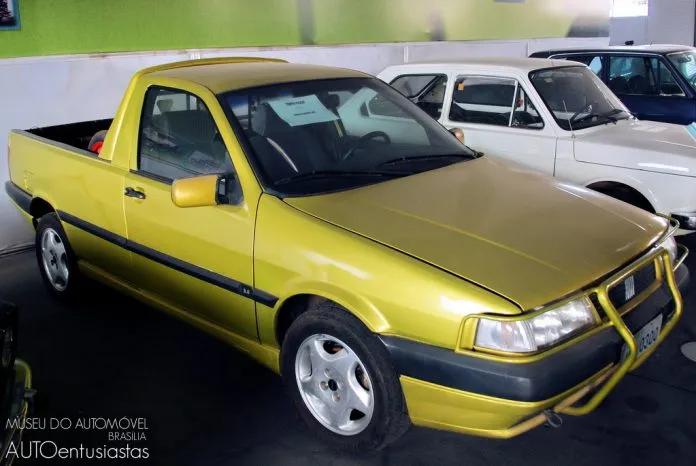
If the Fiat Tempra Pickup had been launched, perhaps the history of the pickup truck market in Brazil would have been a little different. The model could have competed with major competitors of the time and could even be remembered today as one of Fiat's greatest successes. However, the project was shelved, and the Tempra continued its path as one of the most respected sedans of the 90s.
Today, the model Fiat Tempra Pickup remains as a curiosity in the Automobile Museum in Brasília, where fans and motorsports enthusiasts can see up close what could have been a revolution in the pickup truck market. Who knows, over time, new Fiat projects may bring out the spirit of innovation that Tempra Pickup represented.









